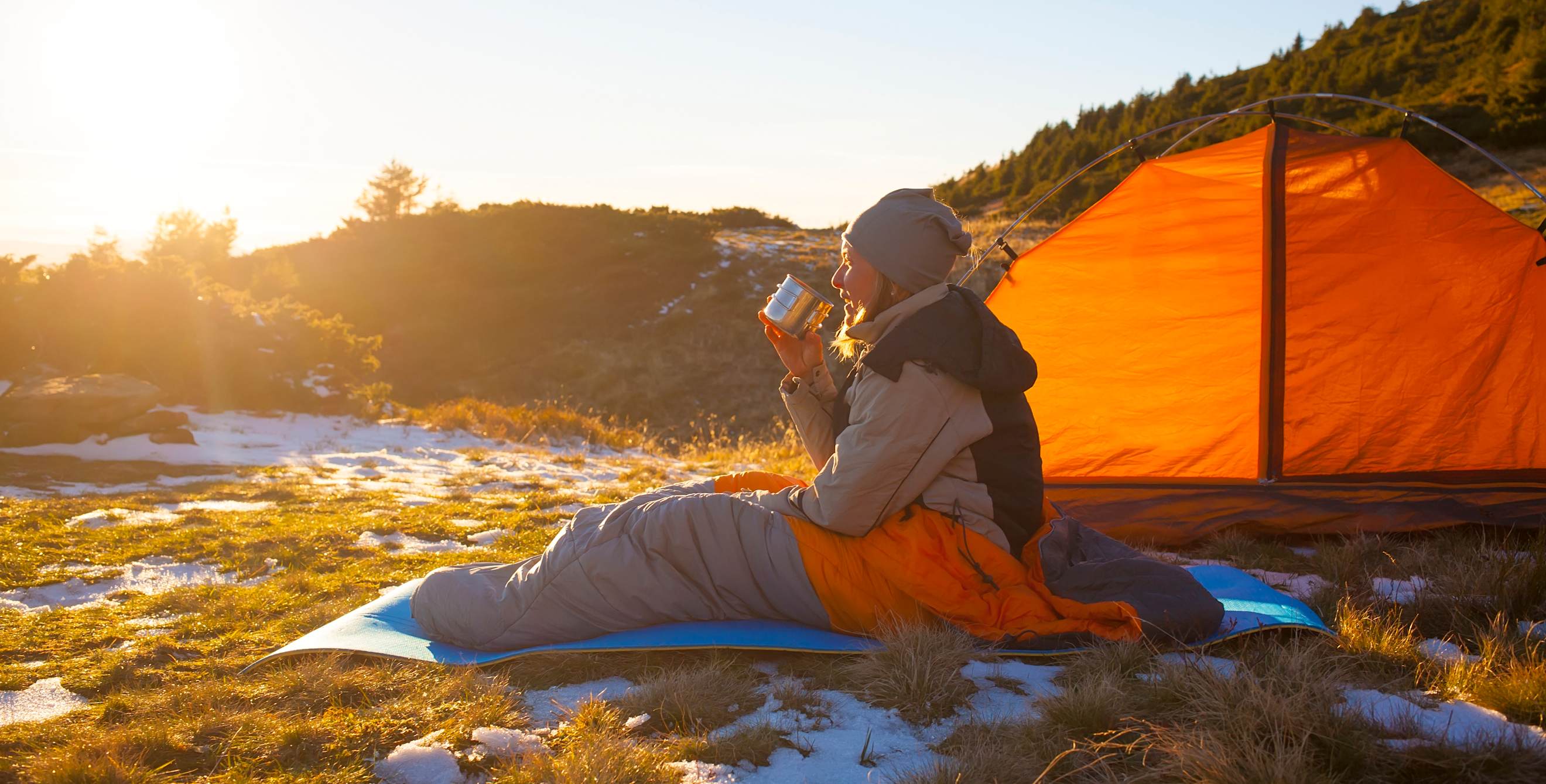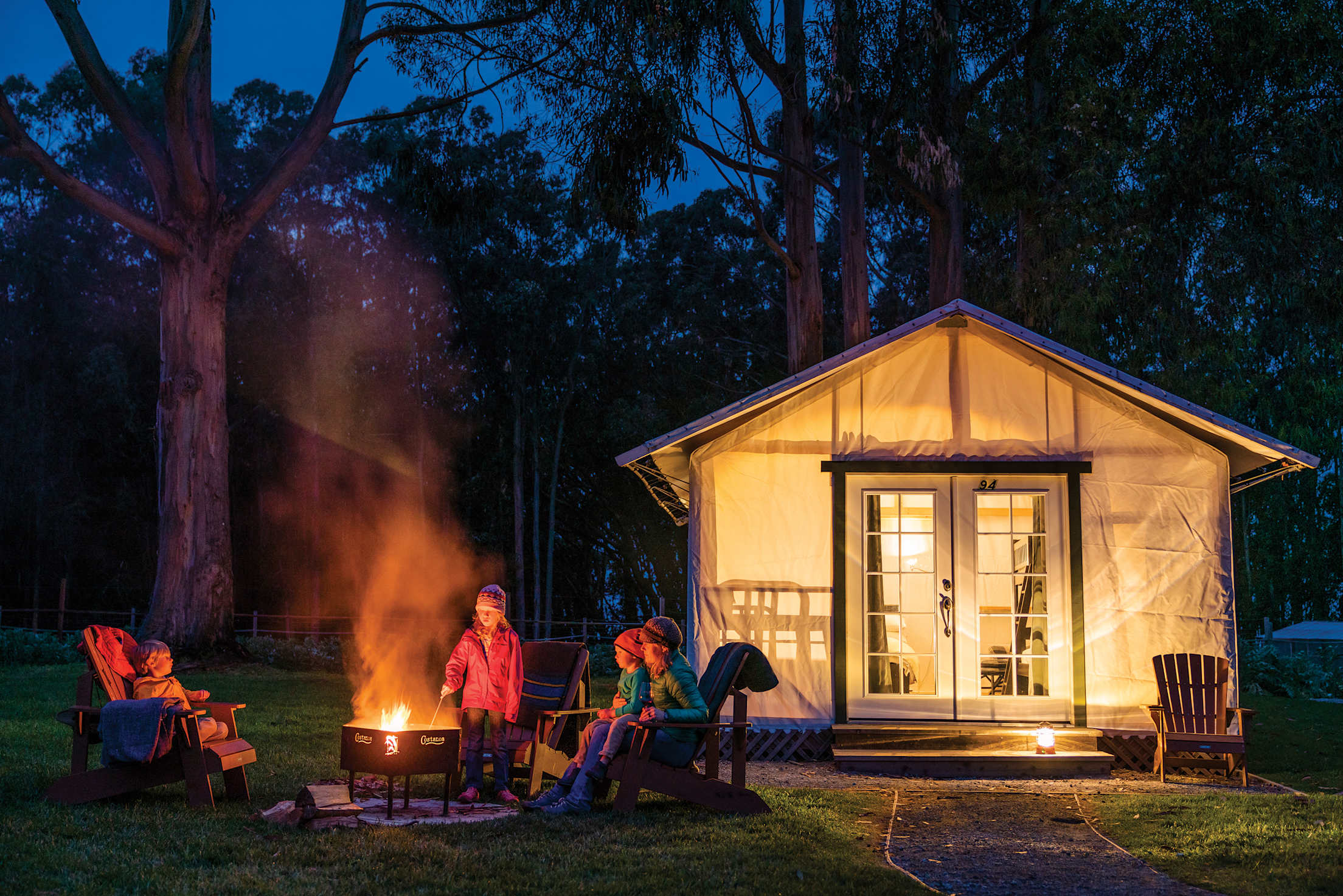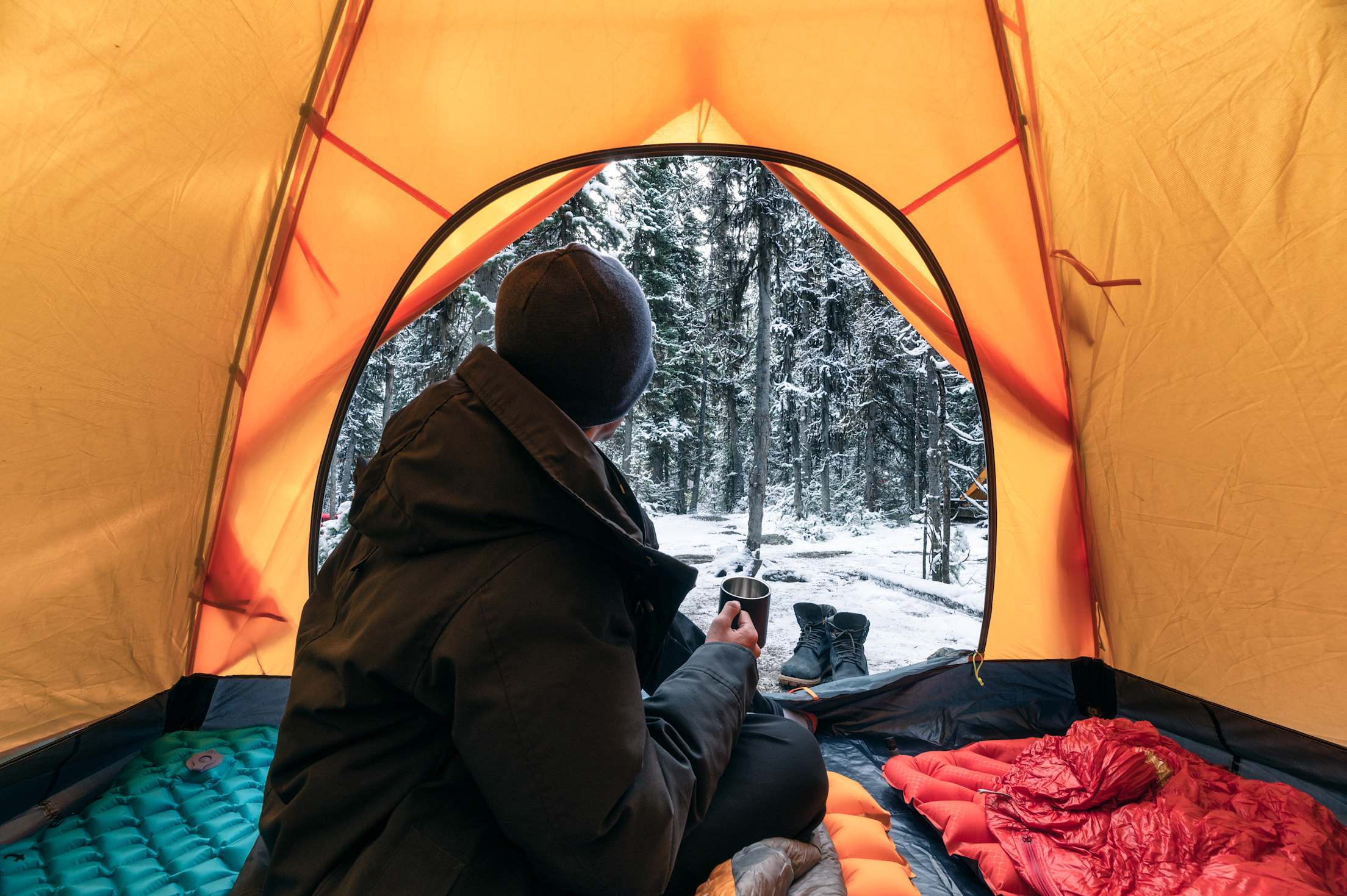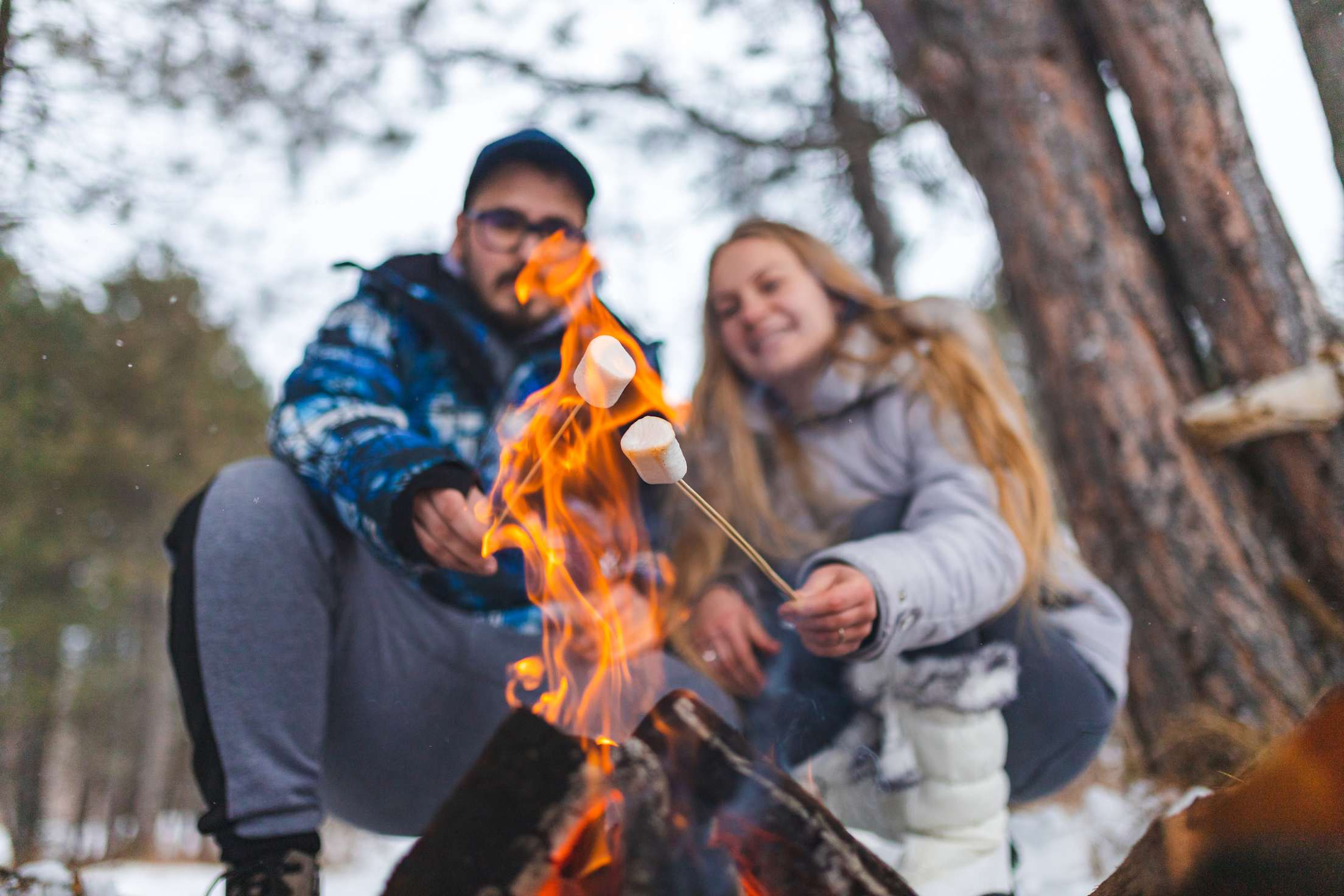
Beginner’s Guide to Winter Camping
Serene campgrounds await.

There is a Norwegian concept, friluftsliv, that calls for embracing the outdoors, whatever the elements. Thankfully, this idea of “open-air living” can be easily applied anywhere in the world, including right here in the West. It’s especially useful when considering winter camping, which for many of us can seem overwhelming.
You don’t have to be a hardcore outdoor enthusiast to consider camping in the off-season. In fact, it’s a great time to enjoy some of nature’s most undeniable perks. In winter campgrounds are typically quieter, which can provide a better chance of spotting wildlife. The West is also home to many regions where the weather remains mild year-round, meaning there’s no need for a winter tent or zero-degree sleeping bag when it comes to slumbering beneath the stars in December, January, and February. Don’t let the season stop you: With a bit of proper planning, you can become a camper year-round.
How to Plan a Winter Camping Trip
“Winter adds an extra layer of privacy and solitude to camping,” says Alyssa Ravasio, founder and CEO of Hipcamp, an online resource of private outdoor stays ranging from traditional tent-camping sites to treehouses and RV parks.
Check the websites of national and state park campgrounds to see what’s open during winter months, and call ahead to confirm availability and find out the latest weather conditions. Private campgrounds, like those available through Hipcamp, are especially welcoming during the off-season, when many public campsites are closed. It’s also important to do a bit of research on what specific sites are like when the weather cools (are the campsites protected from strong winds?). Higher elevations get colder more quickly than lower ones, so it’s important to know their elevation.
Steer clear of areas prone to vast temperature drops, and pay close attention to the forecast before departing. While California’s Redwood National and State Parks are known for their temperate winter climate, they can also be quite rainy. It’s best to know what you’re getting into and to have a clear sense of your outdoor preferences before setting up camp in the wild.
On a similar note, consider limiting your stay to just a night or two the first time you go camping in the off-season, or start out with an overnight test-session in your own backyard to make sure you’ll be comfortable.

What Amenities to Look For
Whether it’s a campground along the California coast or a desert spot in Nevada, winter camping in the West isn’t always bone-chilling, though it’s inevitably colder than summer months. Look for campsites that boast hot showers, allow campfires, and/or feature hot tubs or nearby hot springs. “If you’re cold,” says Ravasio, “hot water can warm you up again really easily.” Some spots, such as the Costanoa KOA Campground along the Northern California coast, feature onsite restaurants that serve breakfast and, in this case, access to a 24/7 dry sauna.
Winter’s also a good time to try out glamping, a type of resort-style camping. “Glamping sites often come with additional perks,” says Ravasio, such as underfloor heating or a more solid canvas structure, “that can add a bit of warmth.”
How to Stay Warm
“One of the heartbreaking things we hear at Hipcamp is that if people are too cold when they’re camping they don’t like to go back,” says Ravasio. “So we want to make sure that’s not you.”
A really warm sleeping bag is essential. “Don’t assume that your summer sleeping bag will work in the winter,” she says. Check the temperature rating on your bag, and make sure it’s rated for at least 10 degrees below the weather’s forecasted low (e.g. choose a 30-degree bag if you’re planning on camping in 40-degree temps). Sleeping directly on the ground can also drain you of body heat, so you’ll want proper insulation in the form of a foam sleeping pad. If an air mattress is all you have, insulate it with a thick blanket beneath and a mattress topper above.
Pitch your tent in a spot that’s flat, dry, and protected from the elements, such as high tides and exposed winds. If there is any snow on the ground, pat it down with your feet before staking your site. This is much easier to do before temperatures drop and the snow freezes in place. Once inside your tent, you’ll also want to keep the airflow going. Open up any vents and windows to prevent condensation from forming, which can make the space feel cold and damp. Consider buffering the tent’s interior base with stuff sacks of your dry and unused belongings, which can add further insulation and help keep you toasty.
Ravasio is also a big fan of hot water bottles to keep toasty. “Heat up the water and fill the bottles up before bed,” she says, “then slip them into your sleeping bag. It’s inexpensive, and so worth the warmth.” Just make sure they are well-sealed before tucking them in.

What to Wear
Another popular Nordic notion is that “there’s no such thing as bad weather, only bad clothes.” It’s a tip that comes in handy whether you’re camping outside Fairbanks, Alaska, in search of the Northern Lights, or spending a winter night in Nevada’s geologically wondrous Valley of Fire State Park.
The key here is to always layer up. Start with a moisture-wicking base layer, such as merino leggings and a breathable wool top, and then pile on fleece joggers and an insulated jacket, topped by a puffy coat and waterproof jacket and pants as needed.
Don’t overdress—sweating will cool down your core as it dries and make you colder—though wearing a couple of warm layers to bed, as well as dry wool socks, and even a hat and gloves, can go a long way toward making your winter camping experience more enjoyable. You can then don the rest of your clothes in the morning.
Pro tip: Avoid wearing cotton, which absorbs sweat and can lead to hypothermia.
What to Bring
A lightweight headlamp with extra batteries (winter nights are long and cold temperatures can reduce how long batteries can hold a charge), hand and food warmers, and plenty of high-fat and high-protein snacks to help keep you warm and energized are essential. For the latter, choose foods such as salami, cheeses, nuts and peanut butter, or an easy-to-heat soup or chili for something a bit more substantial.
Pack an emergency kit, which you can leave in your vehicle if you’re car camping. Stock it with a warm blanket, extra socks, plenty of water and food, and a flashlight with additional batteries. Include first-add essentials such as bandages, gauze pads and wraps, and antiseptic cream, as well as a Swiss army knife and winter supplies for your vehicle, including an ice scraper, snow brush, road flares, and tire chains. Jumper cables also come in handy for ‘jump-starting’ your car if the battery dies.

Things to Do at Your Campsite
Since the season’s days are short, Ravasio says she’s always thinking about what to do at night after the sun goes down. It might be sipping steaming mugs of hot chocolate around a campfire, playing board games from the comfort of sleeping bags, or simply getting a solid night of shut-eye without the distraction of a television or computer screen.
Winter is also known for its incredible sunsets, a result of the season’s lower humidity and colder temperatures, paired with the angle of the sun. It’s a scientific phenomenon, and catching one should be on every winter camper’s list. “The whole sky turns oranges and reds as light is reflected through the atmosphere,” says Ravasio, “making winter sunsets consistently more epic.”
Whatever you choose to do, the true purpose of winter camping is to just have fun. “Winter camping is underappreciated,” says Ravasio, “but it’s really just so special to be in nature without the crowds. It’s not an easy thing to do these days, so why not take advantage of it?”